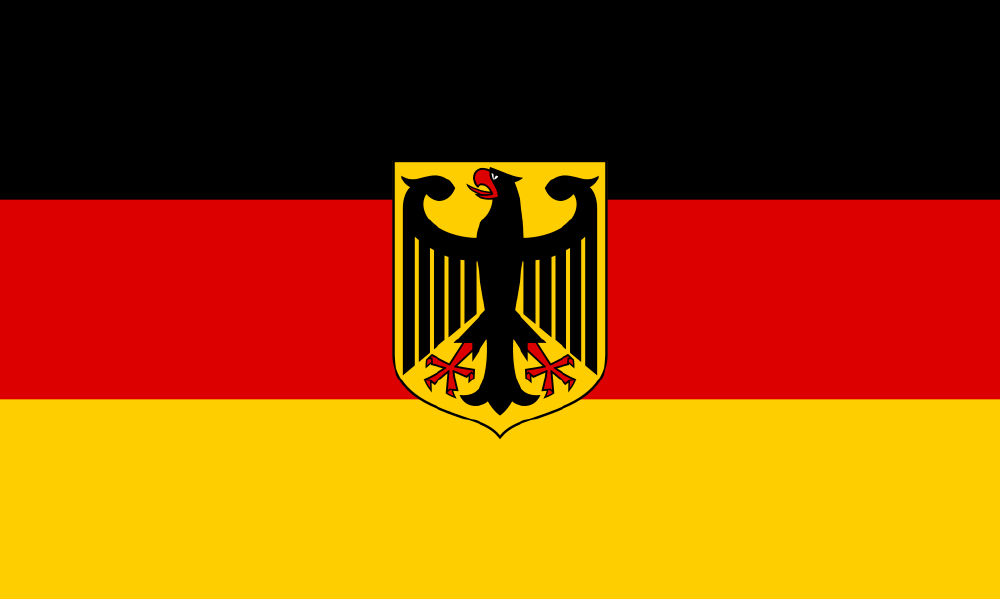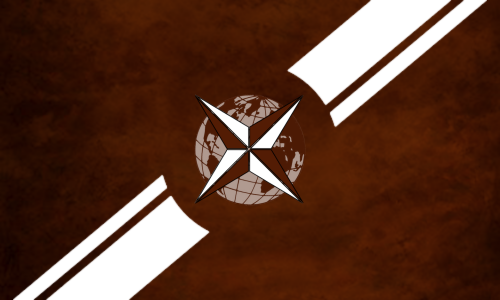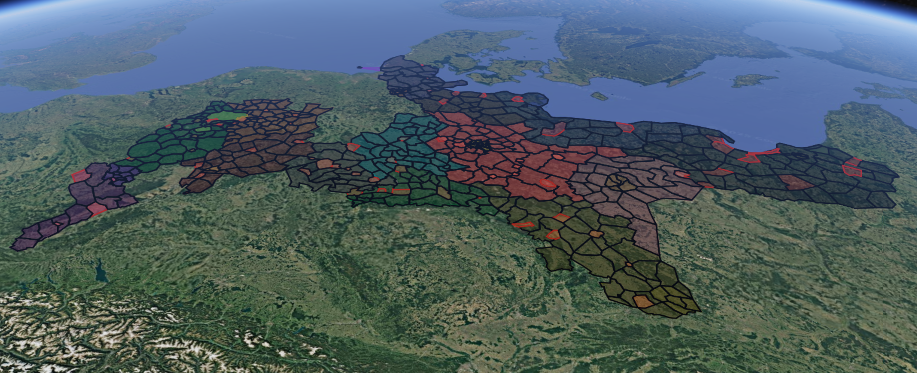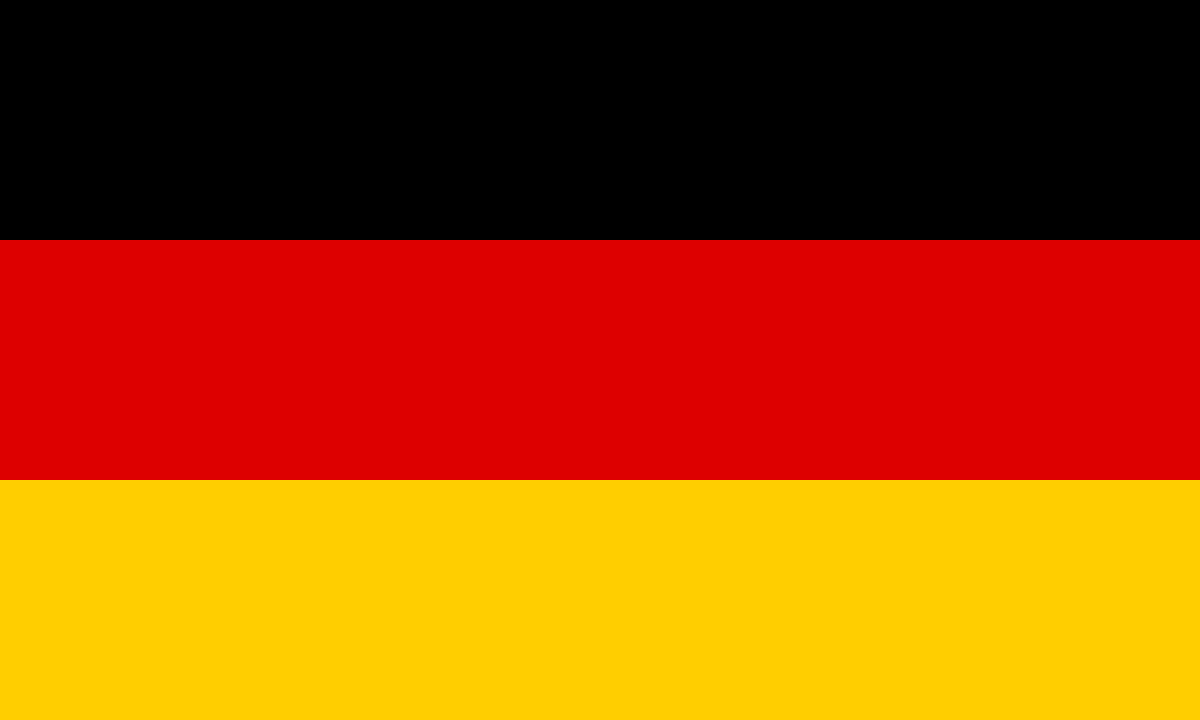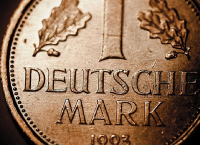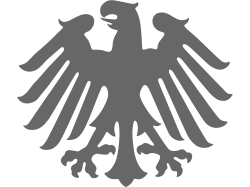| History: |
History of Prussia: From Teutonic Beginnings to Federal Power
Prussia’s earliest foundations lie with the Teutonic Knights, a Catholic military order invited by Polish Duke Konrad of Masovia to Christianize the Baltic tribes. Beginning in 1226, the Order carved out a powerful theocratic state along the southeastern Baltic coast. Over centuries, it consolidated power through conquest and colonization, forming a rigid, Germanic feudal society that became culturally distinct. Their capital, Marienburg, stood as one of the largest brick castles in Europe, and the Order gradually shifted from a religious institution into a political-military power. However, its domination drew resistance, culminating in the Thirteen Years’ War (1454–1466). As a result, the Order ceded western lands to Poland (forming Royal Prussia) and retained the eastern portion as a Polish fief, eventually secularized into the Duchy of Prussia in 1525. The Duchy of Prussia became the first Protestant state under Albert of Prussia, former Grand Master of the Teutonic Order. In 1618, it entered personal union with the Margraviate of Brandenburg, forming Brandenburg-Prussia. The rulers, members of the House of Hohenzollern, played a shrewd diplomatic and military game in the chaotic landscape of the Thirty Years’ War and beyond.
By the late 17th century, the territory grew increasingly centralized and militarized, focusing on bureaucratic efficiency and religious tolerance to fuel development. In 1701, Elector Frederick III crowned himself King in Prussia, signaling Prussia’s ascent as a sovereign European power. From the 18th century onward, the Kingdom of Prussia became synonymous with discipline, militarism, and statecraft. Under Frederick the Great (1740–1786), Prussia expanded into Silesia, fought multiple wars, and implemented Enlightenment-inspired reforms. His reign marked the golden age of Prussian absolutism.
The Napoleonic era humbled Prussia, with the loss of eastern territories such as South Prussia and New East Prussia alongside Westphalia. However, it rebounded through military and civil reform after 1815. The 19th century saw Otto von Bismarck, a Prussian statesman, orchestrate wars against Denmark, Austria, and France. In 1871, Prussia led the formation of the German Empire, with its king crowned German Emperor in Versailles. Prussia dominated the empire politically and militarily, but its constitutional monarchy coexisted uneasily with emerging democratic forces. The devastating First World War (1914–1918) led to the abdication of Kaiser Wilhelm II, ending the monarchy and dissolving the empire.
With the German Empire’s collapse, Prussia became the Free State of Prussia, the largest and most influential state in the Weimar Republic. It was a republican stronghold and democratic bulwark against extremist threats, maintaining stability even as the rest of Germany became increasingly polarized. In 1933, the rise of the National Socialist regime saw the erosion of Prussian autonomy. The Preußenschlag (Prussian Coup) by Franz von Papen had already dismantled its democratic government. The Nazis dissolved federalism in practice, replacing Prussian regions with Gaue under the party’s control. Though Prussia legally remained, its identity was hollowed out by the wretched National Socialists.
Following Germany’s defeat in WWII, Prussia’s territory was partitioned. The Allied Control Council formally abolished the state in 1947, citing its legacy of militarism and authoritarianism. Prussian lands were liquidated by Poland, the Soviet Union, and the two emerging German states: Bundesrepublik Deutschland (West Germany) and Deutsche Demokratische Republik (East Germany). Millions of Germans, particularly from East Prussia, Pomerania, and Silesia, were expelled in brutal ethnic cleansings now termed the Prussian Genocide (1945–1950). Prussia’s cultural and political legacy was systematically dismantled such as the demolition of the Königsberg Castle, alongside other acts by the Soviet regime. Its name, history, and even symbols were purged from public memory. Yet traces of its institutions and values remained embedded in postwar Germany’s governance, law, and educational systems.
West Germany rebuilt through the Marshall Plan, economic liberalization, and NATO alignment. Policies like the Hallstein Doctrine and Ostpolitik were cornerstones of its Cold War foreign policy.
East Germany, meanwhile, became a Soviet satellite, experiencing industrial pillage, intense surveillance under the Stasi, and a centralized planned economy. The GDR also retained select Prussian institutions in name and infrastructure, though under tight Communist control.
The fall of the Berlin Wall in 1989 and subsequent reunification in 1990 signaled the end of Germany’s division, with Prussia remained absent from the political map. Germany continued to thrive, returning as the world's 3rd biggest economy by 2025. However, the Third World War devastated much of the global order, collapsing international institutions and undermining the Bundesrepublik. In this void, the Prussian revival began.
Initially, the Kaliningrad Republic was re-Germanized and claimed as a Prussian cultural successor. Subsequently, in 2080, an autocratic Prussian monarchy was restored under King Frederick, launching a militaristic resurgence against Soviet remnants. Despite some victories, the regime faltered, and King Frederick was ousted, fleeing to the Iberian peninsula. The era was shaped with autocracy, brutal suppression and degeneracy.
A new monarch, King Oof von Abdullah was crowned, founding the House of Prussia. This period saw religious diversity and cultural tolerance grow in a once rigid society. However, war with the Neo Germans, another authoritarian regime, once again destabilized the region. King Oof died in the war, succeeded by Prince Wilhelm, who was later overthrown after a series of unpopular decrees. King Albert of Prussia took over as the King, in which he and the Prussian political elites continued their operation as a government illegitimately, involved in usual government stuff such as the rebuilding of Prussian cities, elections, alongside other local issues.
Prussia was eventually reestablished as a constitutional monarchy. In which the Prussian government joined other states in building a federal system. This was the German Federation led by Austria. During this time, the Prussian government gave up on their claims and assets in lands such as Posen, Outer Prussia, Danzig and New East Prussia, in which the Prussian government were compensated with the acquisition of the Rhine, alongside the return of Brandenburg.
By 2101, Prussia, Saxony, Anhalt, Hesse, and Thuringia formed the North German Federation (Norddeutscher Bund). Territories like Posen, West Prussia, Danzig, and Mecklenburg were reincorporated. In 2103, Schleswig-Holstein and other regional monarchies also joined, forming a new cohesive bloc.This era saw a fusion of monarchy and democracy, where monarchs served symbolic and rotational roles, while an elected government managed daily affairs. Prussia, with its economic and military strength, became the Federation’s industrial backbone.
The North German Federation asserted its might on the global stage. In 2109, it joined a war alongside his European partners against the Union of India, securing victories and briefly occupying Mumbai before returning it to local governance. During this war, King Albert of Prussia died, in which Wilhelm returned as the Regent, in which his policies angered the political elites.
Wilhelm was overthrown again, and a new constitution was drafted in 2106, establishing a federal monarchy with Emperor Frederick as head of state and King of Brandenburg. Frederick was proclaimed Emperor by consensus among monarchs and federal leaders, initiating a new chapter of constitutional order. The Federation ratified a rotating Emperor system.
Internationally, the Frankish Federation emerged briefly but later dissolved, replaced by a Germanic Bund—a tripartite alliance of North Germany, South Germany, and Austria. This further legitimized the North German-led order in Central Europe.
As France was liquidated, North Germany inherited several overseas territories, including Kamerun, the Panama and Nicaragua Canals, and the protectorate of Gaza. These acquisitions expanded Prussia’s influence, both economically and militarily. Meanwhile, Alsace is reintegrated into the Federation following the fall of France. The region’s integration was challenged by a refugee influx, lawlessness, and economic collapse, but federal programs aimed to stabilize the situation through infrastructure, identity recognition, and historical reconciliation. |

